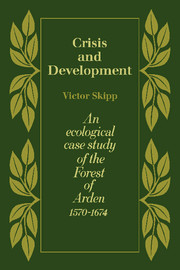Appendix II - Estimates of population size
Published online by Cambridge University Press: 05 November 2011
Summary
The 1524/5 subsidy rolls for Bickenhill, Solihull and Yardley list a combined total of 247 taxpayers. If a 60% allowance is made for omissions and exemptions (see Chapter 2, n. 7) this brings the total up to 395. It has recently been argued by Dr Patten that a figure arrived at in this way represents an estimate of males aged 16 + and that to convert this to an estimate of population size one needs to double it in respect of a presumed equal number of adult females and then allow for the fact that 40% of the total population are likely to have been children under 16. A calculation using this method, however, provides a combined total of only 1,317 for Bickenhill, Solihull and Yardley in the 1520s. Quite apart from the problem of reconciling such a low figure with the earliest available Cox estimates, it would imply a population density of 1 person to 17.2 acres (or 1 household to 81.7 acres), which is patently unacceptable.
In any case, when one looks at the local rolls, Dr Patten's assumption that males who were over 16 but not householders are adequately represented, hardly seems tenable. Taking the returns for Solihull and Yardley together, out of a total of 169 surnames there turn out to be 149 which occur only once on their particular roll. Against this we find a combined total of 52 people bearing one of 20 duplicated names.
- Type
- Chapter
- Information
- Crisis and DevelopmentAn Ecological Case Study of the Forest of Arden 1570–1674, pp. 115 - 117Publisher: Cambridge University PressPrint publication year: 1978



